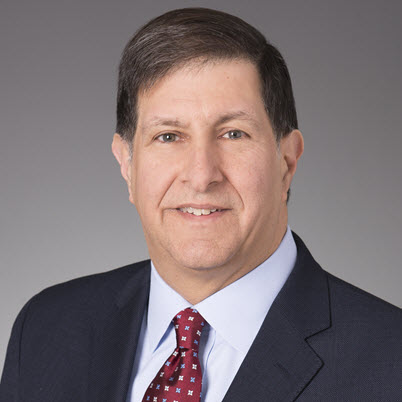This article was published on November 20, 2020.
ADDRESSING THE 'TOUGH LEGACY'
Randal K. Quarles, the Federal Reserve’s Vice Chairman for Supervision, in his November 2020 testimony to the US Senate Committee on Banking, offered a preview into how the Federal Reserve might help the financial services industry address the issues of legacy contracts that use the London Interbank Offered Rate (LIBOR). If the solution described by Quarles can be created —a “mechanism” allowing existing LIBOR contracts to mature beyond 2021 without having to be renegotiated—then transition can be simplified; application of fallbacks can be limited, and existing loans can mature organically while new loans use new rates. Below is the web version of "The Fed's LIBOR Game Changer," for the PDF version, please click here.
If the proposed mechanism comes to be, it will be a game changer—with the transition from LIBOR remaining a herculean task, but the focus can shift to lending on new alternative rates.
These legacy contracts have been the elephant in the room of LIBOR transition. When LIBOR ends, there will be many contracts that are difficult or impossible to change: there may be no defined process; language in the contract may be inadequate; language may rely on parties that no longer exist; or consent is needed from multiple parties. The core issue is that any shift to a new rate creates winners and losers. Many have called litigation inevitable.
We have been advocating that this is not a problem that participants can solve. It cries out for a central approach and generally as participants understand the issue, they concur. The financial regulatory authorities seem to have determined they need to help and are about to intervene. If the proposed mechanism comes to be, it will be a game changer—with the transition from LIBOR remaining a herculean task, but the focus can shift to lending on new alternative rates.
LIBOR TRANSITION BACKGROUND
Market participants have been preparing for the discontinuation of LIBOR which industry regulators have indicated could be as soon as the end of 2021. This massive task impacts the entire banking system and did not stop or slow down due to COVID-19. If anything, the transition has seen major developments during October 2020, including:
- Major Central Clearing Counterparties (CCPs) have shifted discounting and price alignment interest (PAI) to the Secured Overnight Financing Rate (SOFR);
- The International Swaps and Derivatives Association (ISDA) published updated fallback definitions and a related protocol for derivatives;
- Legislation to mitigate some “tough legacy” contracts has been introduced to the New York State legislature and is being discussed on a federal level; and
- Regulators published initial results of the Credit Sensitivity Group workshops, indicating they would not recommend a specific adjustment to SOFR, a feature many in the banking community were asking for.
A KEY ANNOUNCEMENT
There is more to look forward to on the horizon. On November 10, 2020, Randal K. Quarles, the Federal Reserve’s Vice Chairman for Supervision, testified to the US Senate Committee on Banking (and the US House Committee on Financial Services the following day) (see notes below) and provided important news. At the hearing, Quarles said:
“We need to consider a mechanism that would allow so-called legacy contracts, the great bulk of them, to mature on their existing basis without having to be renegotiated and shifted to a new rate without allowing the continuation of the writing of new contracts.”
“There are a variety of ways to do that… Within the next month or two, we should have a plan to share that would address that.”
Quarles is referencing legacy LIBOR contracts which are an enormous problem. There are millions and when LIBOR ends, in the best case, lenders and borrowers see an economic change, and in the worst case, their economics are not even known. Financial institutions have been hard at work reviewing and remediating contracts, but apparently the Fed is concerned that this problem is too enormous and too risky to not take action.
If the solution described by Quarles comes to pass—a mechanism allowing existing LIBOR contracts to mature beyond 2021 without having to be renegotiated—then transition can be simplified; application of fallbacks can be limited, and existing loans can mature organically while new loans use new rates.
THE CONSIDERATIONS
This is an enormous change and there is uncertainty as to what is to come, but Quarles’s testimony implies:
RECOMMENDATIONS
This is a complex subject which requires monitoring. Given the uncertainty, many are asking the question of ‘what to do now’ and ‘what to say’ to customers.
Our thoughts for the next 60 days—while monitoring for new information:
1. Follow the Hippocratic Oath and do no harm—nothing is final yet and firms should continue current plans. (CLICK HERE)
However, we do suggest:
- Prioritize longer-term contracts, for example, those maturing after 2023.
- Hold off on client communications about fallbacks and timing.
- Consider the impact of the ISDA protocol across multiple timeline scenarios before adhering—different mechanisms may change economics or applicability to your portfolio.
In the longer term, once the proposed mechanism and ramifications are clear:
CLOSING THOUGHTS
While LIBOR transition is a major program, it was never based on an immovable date like ‘the year 2000’ (Y2K). It now seems possible that transition may end up being simplified for USD legacy contracts, which would address major concerns.
But even as the LIBOR transition continues to evolve, it will inevitably happen. In the words of New York Federal Reserve President John Williams, “Some say only two things in life are guaranteed: death and taxes. But I think there are three: death, taxes, and the end of LIBOR.”
And apparently, the end of LIBOR is going to get a multi-year reprieve.



RELATED INSIGHTS
-
 Read More
Read MoreInsights A practical guideWhat If LIBOR Transition Is Postponed?
-
 Read More
Read MoreInsights Our new report on LIBOR transition outlines why the speed of change needs to accelerate ahead of 2021Time To Switch Rates: Libor Transition
-
 Read More
Read MoreOliver Wyman We advise our clients on corporate finance and treasury strategy, integrated planning, cost takeout strategies, and operations, data and technology transformation.Finance And Treasury Management

